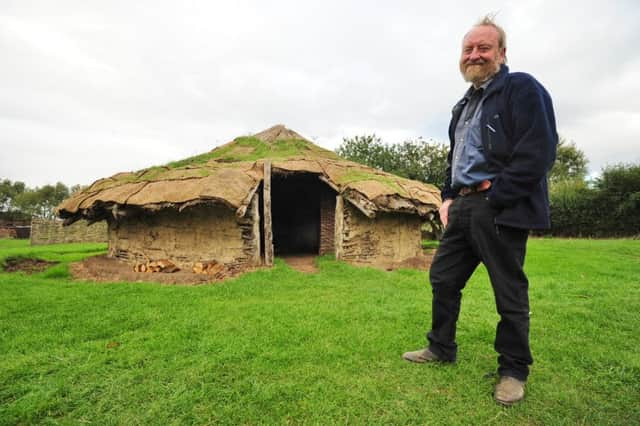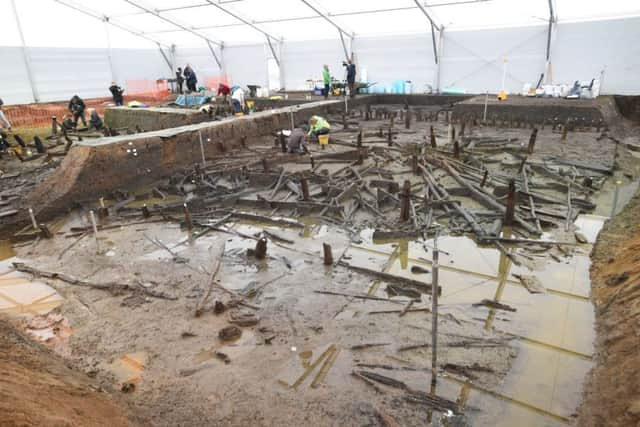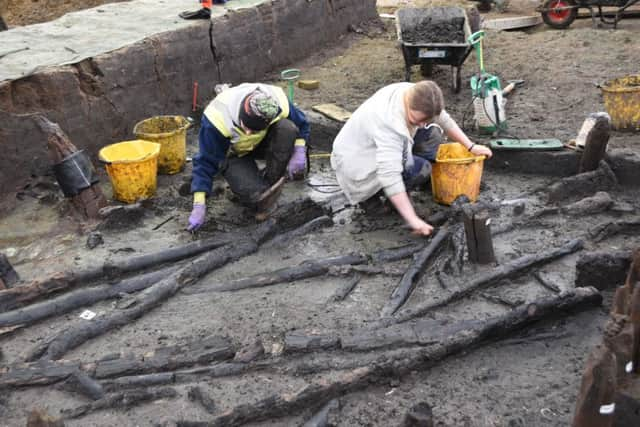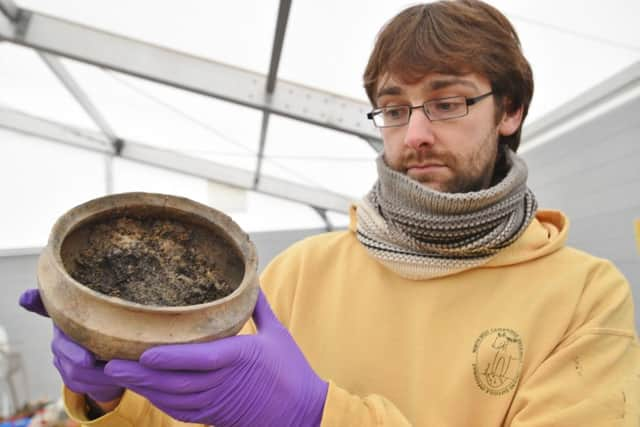Walking back in time to the'¨Bronze Age


Two Bronze Age round houses, dating back to around 1290 BC were discovered in Must Farm Quarry, off Funthams Lane near Whittlesey.
The 3,000 year old houses, which were built on stilts were destroyed by a fire and collapsed into a river - which preserved bowls, tools and even timber in clay.
Advertisement
Hide AdAdvertisement
Hide AdNow archaeologists have been able to learn more about how our ancestors lived after a £1.1 million project to excavate the site, funded by government heritage agency Historic England and quarry-owners Forterra, was launched.


The discovery comes just five years after eight rare Bronze Age boats were discovered in the same quarry.
Francis Pryor, the archaeologist who discovered the world-renowned Flag Fen Bronze Age site near Peterborough, said the city should do more to promote its pre-historic claims to fame.
He said: “I visited the latest Must Farm discovery just before Christmas. It is of international significance, because everything has been superbly preserved.
Advertisement
Hide AdAdvertisement
Hide Ad“With most sites you don’t get wood or organic material preserved, but for the first time ever in British pre-history research - and I think in European history - we have roof timbers.


“The only sites of comparable quality are Swiss lakes and a few in Scandinavia - but here we have the whole landscape, which is not available elsewhere.
“When people think of British archaeology they think of York and the Vikings, but what we have here is just as significant, but even older.
“I think we should push what we have even more than we do.
“What we need is a Bronze Age Centre to show off all the things we have here.


Advertisement
Hide AdAdvertisement
Hide Ad“When I went to the Must Farm site, the hairs on the back of my neck stood up.
“I have been working on the Bronze Age for so many years, and as I looked at the site I saw so many things there on a plate.
“It took my breath away, and I think that is what archaeology like this can do.
“I am sure there are plenty more discoveries in the area waiting to be found, because of the way the items can be preserved in the clay.


Advertisement
Hide AdAdvertisement
Hide Ad“All developers should have to clear the area they are working on for archaeological work first, as you never know what could be under there.”
Inside the roundhouses at Must Farm, a range of artefacts have been found - from bowls with food remains still inside to spear heads and even pre-historic textiles.
Mark Knight, site director of the excavation, said: “We are, effectively, for the first time in British history about to go inside a Bronze Age roundhouse.
“We’re going to go inside a Bronze Age home, we’re going to see what’s in there, what they were wearing, what they were eating on the day of the fire. We’ll understand what the world they lived in looked like, what it smelt like. It’s a world we’ve dreamed about getting into. Here we have it in that space.”
Advertisement
Hide AdAdvertisement
Hide AdA human skull has also been found, but Mr Knight said further excavation was needed to discover if there were more remains and whether the person had died in the fire, or was the skull of an enemy or an ancestor that had been displayed.
For more details visit www.mustfarm.com